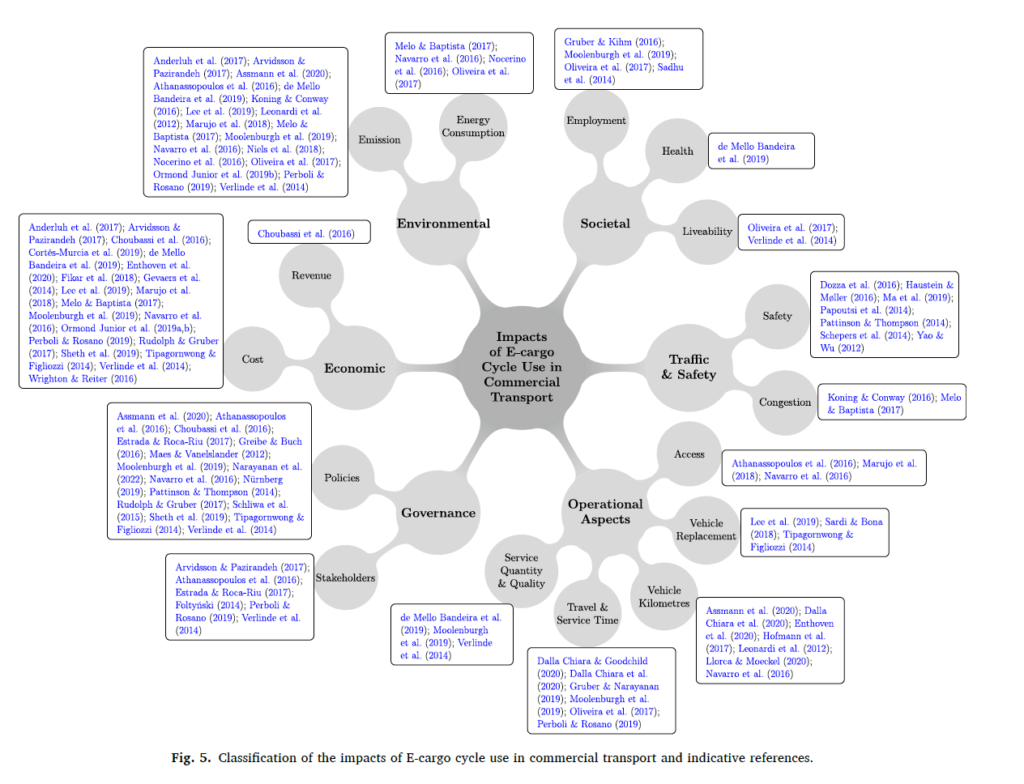Electric cargo bikes can potentially reduce the negative impacts of transportation systems when utilized for the right application. There is a growing literature, especially on commercial freight transport. Therefore, it is essential to have a comprehensive outlook of the prevailing literature to synthesize the existing knowledge base.
A paper by Narayanan and Antoniou consolidates the studies in the growing field of cargo bikes. The primary focus is on commercial freight transport. The paper focuses on typology, penetration, impacts, and operational and policy requirements. The typology is based on trip type, network configuration, and fleet composition.
Factors influencing penetration
The factors influencing the penetration of cargo bikes are identified and classified into six groups, namely (i) Operation, (ii) Vehicular, (iii) Infrastructural, (iv) Workforce, (v) Organisational, and (vi) Policy. Furthermore, the impacts of E-cargo cycles are categorized as (i) Economic, (ii) Environmental, (iii) Societal, (iv) Traffic and safety, (v) Operational, and (vi) Governance.

The impact of e-cargo bikes
Besides, factors that influence the impact on cost-of-using cargo bikes are found and grouped under (i) Customer, (ii) Operator, and (iii) Policymaker. Finally, when utilizing cargo bikes, a simplified decision-making scheme is provided to facilitate the selection of network configuration and fleet composition.

Policy requirements discussed in the literature are also described and categorized as (i) Regulatory, (ii) Incentive, (iii) Infrastructural, and (iv) Awareness creation.
Future perspectives
With growing E-commerce activities, there is an increasing potential for cargo bikes. However, no significant literature exists that quantifies this potential. Pandemics like COVID-19 further increase E-commerce activity. Future research should also study this aspect, i.e., the possibility of pandemics like COVID-19 influencing the penetration potential of cargo bikes.
Further suggestions for future research include the identification of optimal nodes in logistics systems for the deployment of cargo bikes, quantification of the effects of incentives and regulatory measures, comparison of different network configurations (UCCs, MCCs, or TPs, and their location concerning delivery zones), assessment of the impact of the average distance to a delivery location on a number of deliveries per hour, evaluation of the influence of demand density on vehicle kilometers traveled, analyzing the need for dedicated vs. mixed fleet under various distribution networks and the impact of the energy mix in the electricity generation.
Source: Santhanakrishnan Narayanan, Constantinos Antoniou, Electric cargo cycles – A comprehensive review,
Transport Policy, Volume 116, 2022, Pages 278-303, ISSN 0967-070X,
https://doi.org/10.1016/j.tranpol.2021.12.011.
